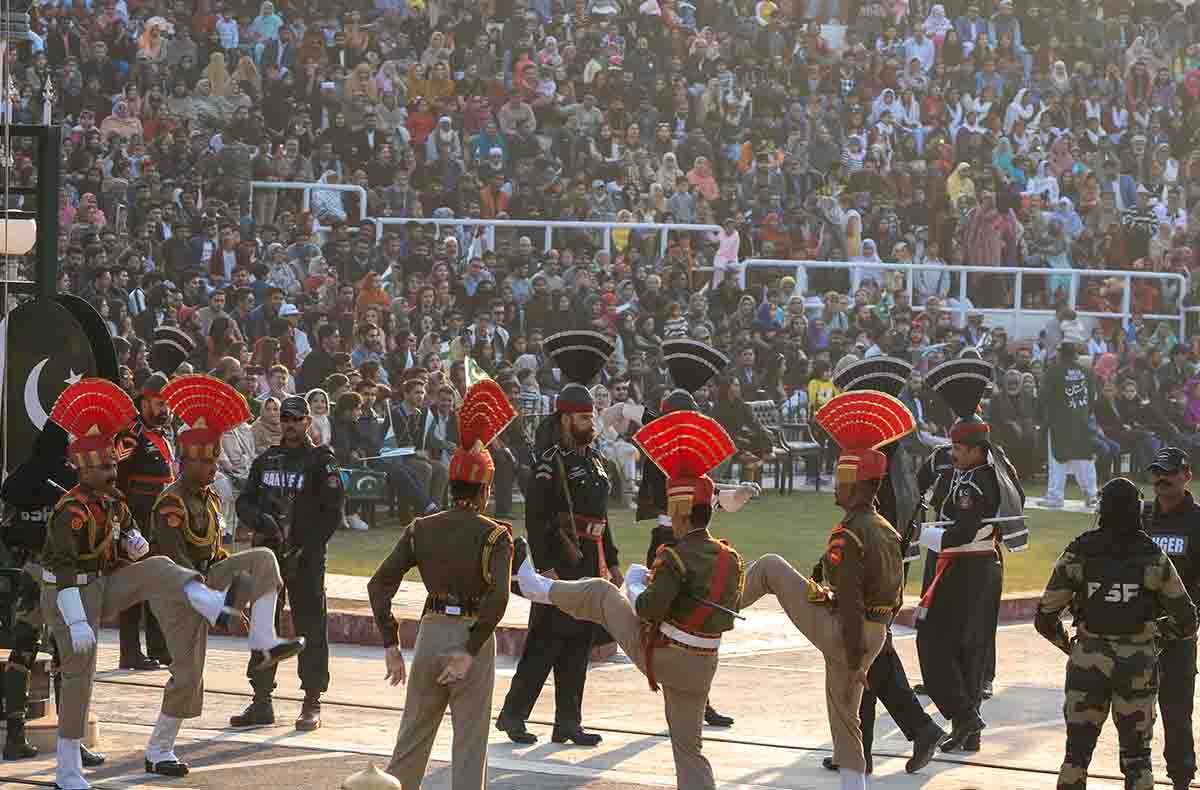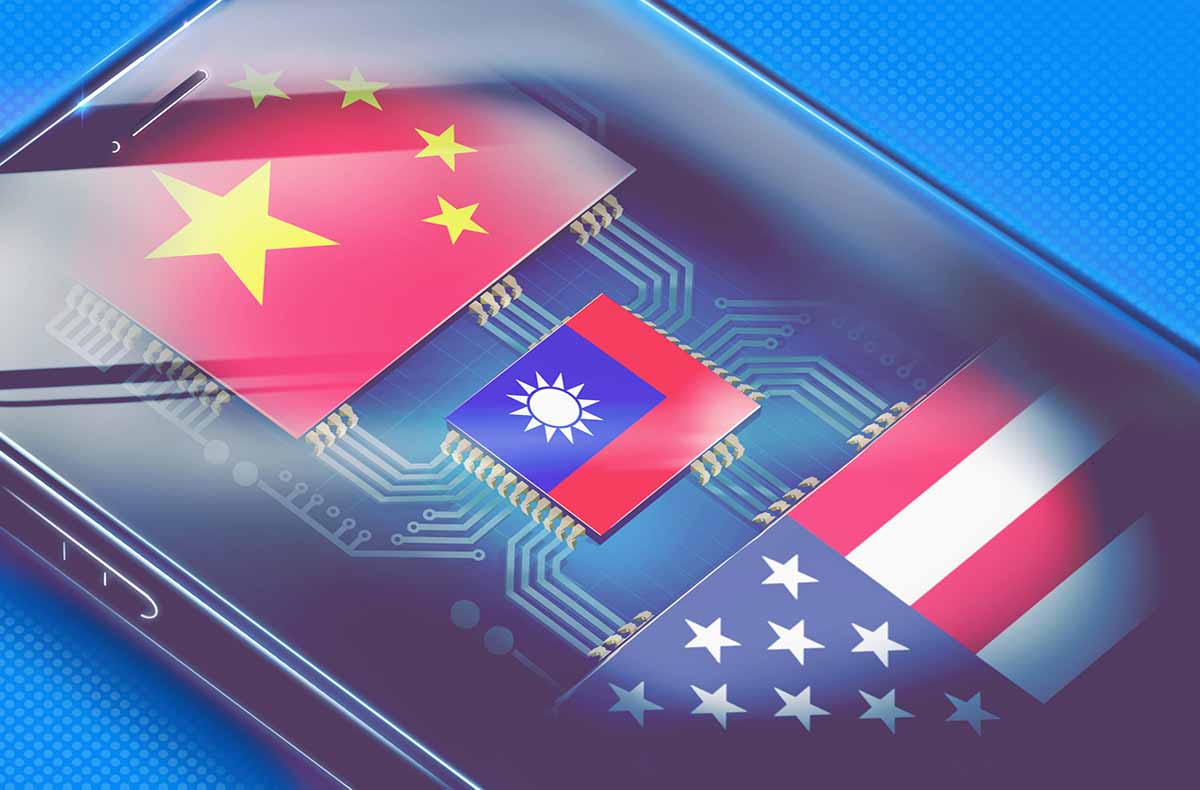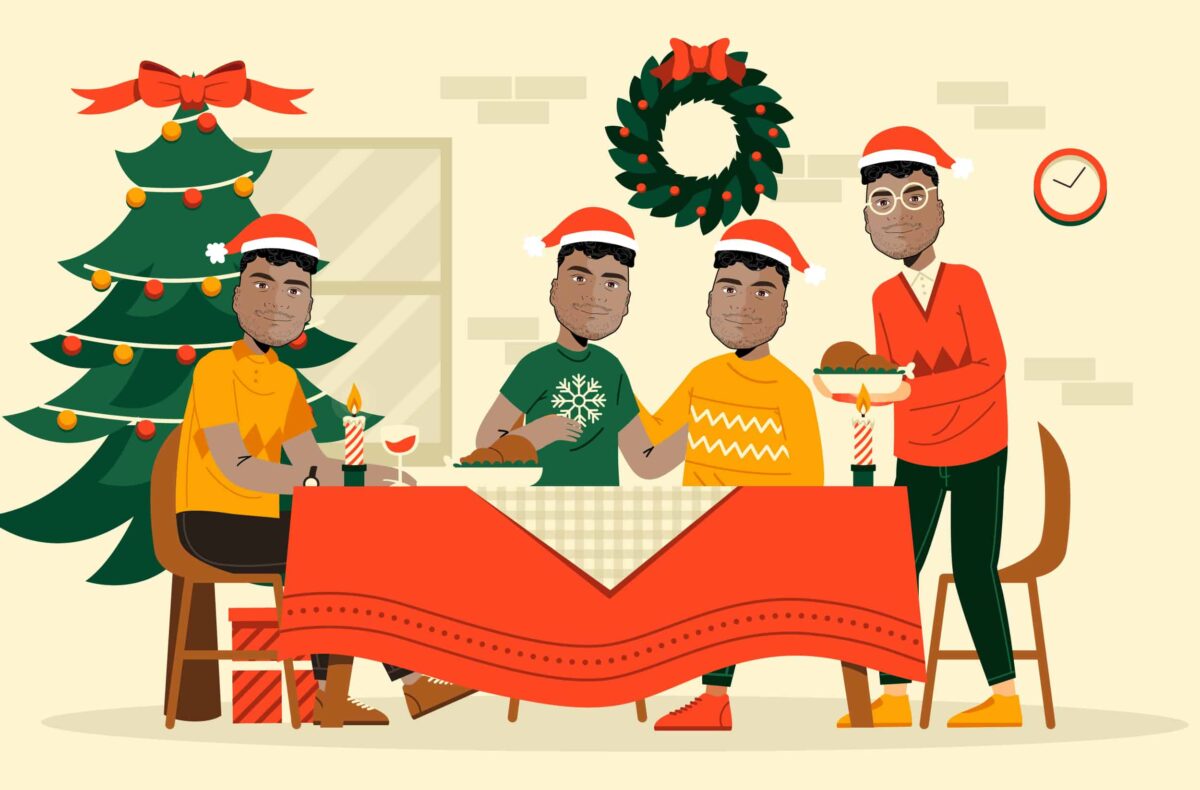
The Wagah-Attari border, located along the Punjab stretch of the India-Pakistan border, is a 29-km stretch of uncomfortable contradictions.
Sunset heralds the beginning of the daily lowering of the flag ceremony. Soldiers, in Indian khaki and Pakistani black, with their thick mustaches and beards, walk and strut in a macho manner, displaying their superiority. Brisk handshakes between both sets of on-duty soldiers conclude the parade. This event can only be described as a ceremony of antagonism in no man’s land.
The border symbolizes rivalry between the two nations and the joint parade amasses thousands of watchers and tourists every day, all eager to see each country display its military prowess.
The tradition began in the 1950s, evolving over the decades into the dramatic and antagonistic ceremony it has become. It’s almost passive-aggressive in how both sets of military seek to antagonize each other without formally provoking the other side, a perfect synopsis of the state of India-Pakistan relations.
I call it no man’s land. This has not always been the case.
The Wagah checkpoint is mid-way between the cities of Lahore in Pakistan and Amritsar in India. The two cities, only 50 km apart, were once part of a unified Punjab state but are now subject to different governments and nations.
The 1947 partition of the subcontinent divided Punjab, with each part subsequently being absorbed into modern-day India and Pakistan. The scale of displacement of people, cultures, families and communities was staggering. It’s almost as if Sir Cyril Radcliffe, the lawyer commissioned to “draw” the new border, had no clue of the significance and gravity of his decision.
Communities that had coexisted for decades resorted to violence in a scramble to try and make their way to “their” side of the newly formed nations. Hindus and Sikhs were on one side and Muslims headed for newly-formed Pakistan—a mutual genocide was as much unexpected as it was unprecedented.
Punjab, before British rule and partition, was a vibrant cultural hub shared by Sikhs, Hindus and Muslims alike. Just like much of India at the time, Punjab was built on deep-lying and rich traditions that cut across religious groupings. People did not define themselves primarily through their religion.
Today the mood has changed significantly. The actions of the Indian and Pakistani governments over the past few decades have promoted a sense of pride in the nation and religion over shared cultural traits.
Conflict over control of the Kashmir region is a primary example of where similarities have been trumped by the interests vested in political and religious ideology. The actions of the Indian and Pakistani governments, more broadly, have undermined any ties, despite promises of peace talks. Borders have become far more politicized over the past decade.
Lines on a map are becoming the root cause of significant disillusionment in not just politics and democracy but among people and their way of life. Guru Nanak Dev Ji, the founder of Sikhism, was born in Nankana Sahib in modern-day Pakistan. Yet when my baba ji wishes to go on pilgrimage to this birthplace, he is met with significant red tape, government documentation and fees. Other Sikhs endure the same obstructions.
Despite the legacy of Empire and partition, parts of modern-day Punjab still reflect some of the traditions that cut across the border. There was a beautiful moment captured on camera last year showing Punjabi soldiers dancing to the song Bambiha Bolle by Sidhu Moose Wala at a border crossing. This sparked a reaction from Pakistani soldiers who joined in and danced on the other side of the frontier.
Of course, on a small-community level there are still pockets of hope and examples of community cohesion. When I last visited my pind (village) in Punjab, I was struck by the wonderful sense of togetherness that transcended religion. Hindus adopted the Sikh concept of Langar (meaning community kitchen) in their local Mandir (temple).
It’s a small reminder of what life was like pre-partition. The Wagah-Attari border ceremony sadly does not reflect the shared cultural similarities of people on both sides any more. One iron gate, one line in the road and a different government changes everything.
The profound, almost crazy part is that those soldiers will go home later. They’ll sit with their families, eat similar food, speak similar languages and both sides definitely watch the cricket.
The Wagah-Attari border is meant to be a symbol of peace and cooperation. It has instead become a daily competition to see which country is better. Shared ties have been discarded in favor of whose military is stronger—a sad state of affairs. As a Punjabi myself, I know I have as much in common with people born in Lahore as those born in India. My religion is the main difference. Yes, this is absolutely important, but it is not the be-all and end-all.
Community cohesion and maintaining shared cultural values are so important. Why throw it away over political turmoil and questionable governance?



